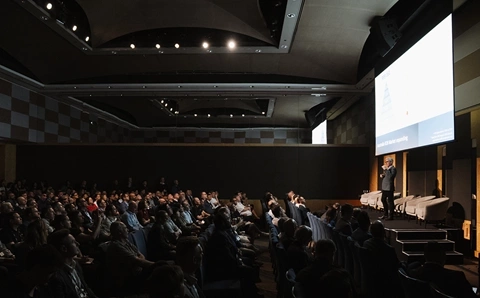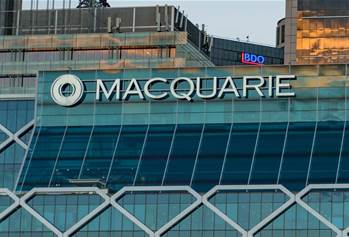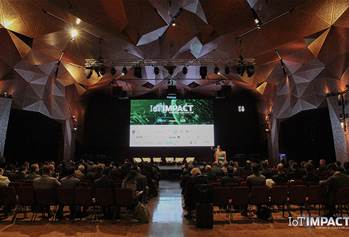The first thing to know about applying environmentally friendly policies to the IT sector, and this probably applies to any industry, is that it’s not that straight forward and not that easy to measure. From product design, to manufacture, through the supply chain and in use until a product is eventually retired and hopefully reused and ultimately recycled, there are a huge number of impacts and potential impacts that process can have on the environment.
Some of course are easier to identify and measure and others offer direct business benefits, so it’s those that perhaps get the most attention. Really getting down to the nitty gritty of why a company is embarking on a Green strategy is equally difficult to detect. Is it really good corporate citizenship, an immediate cost imperative, a recognition that customers are becoming more demanding, or an acceptance that ultimately the government will mandate change so to avoid panic then the job needs to be started now?
One way to simplify the issue is to look at environmental impact in two ways. First there is the process of manufacturing, delivering and recycling a product. This is the category of producer responsibility. Then there is the use of the product through its lifecycle, how it is used, how much waste it creates and how much energy is it using. Most servers and communications and server equipment is on 24 hours a day. As a result, power usage is one of the most pressing factors in the industry’s efforts to reduce environmental impacts, happily it is also easy to measure and has a direct economic benefit.
Other areas are not so straight forward. The printer industry, for example, has long been seen as a great producer of waste and as a consequence has perhaps been the most proactive in change. Recycling of ink and toner cartridges has long been in place and now the printer industry is looking deeper to find more ways to help save the environment.
Like many of the largest vendors in the IT industry, Hewlett Packard has a good story to tell when it comes to Green initiatives, According to Annukka Dickens, environment manager, HP South Pacific, being a global citizen first became a part of the company’s corporate objectives back in the 1950s and today that translates into a number of green initiatives, from the recently announced trial of a carbon offset program for its printers, to full lifecycle planning to reduce emissions during manufacture, supply chain usage and end-of- use recycling.
The company’s first recycling program began 20 years ago and has so far recycled one billion pounds by weight. The next milestone is to recover another billion pounds by 2010.
Dickens confirmed the company’s recycling efforts are still a cost centre and explained that the focus on manufacturing, the choice of materials and product design are all part of an approach the company has in place to reduce the cost of recycling and improve reuse.
The chances of reaching a break-even point will vary from country to country, she said. “We would like to see break even. It depends on which part of the world you are in, it’s a volume game, but it also involves the efficiency of the recycling technology you use,” she said.
“We see (Designed For Environment) as an opportunity. If (a product) is designed for recycling we can reduce the cost at end-of-life and get the recycling value up. Small changes in a product can have a big impact on this equation. Hopefully we will be able to demonstrate that the investment you put in at the beginning of the life can improve yield. It is a longer term strategic approach,” she said.
Simon Elisha, chief technologist for Hitachi disk storage subsystems told CRN about the company’s extensive eco program which also begins long before the product reaches the user. Each product is assessed against eight criteria including all aspects of manufacturing, distribution, usage, recovery and disposal.
Hitachi’s “Environmental Efficiency” index measures the environmental impact and resource consumption of its products. Hitachi calculates the ratio of the product’s value to the raw materials used in its production and the amount of waste remaining when it is disposed of as well as the ratio of a product’s value to the quantity of greenhouse gases generated during its lifecycle. This might be affected not only by the physical design of the machine, such as the ability to power down drives when not in use, but the company also contributes to efficiencies with features such as dynamic provisioning and de-duplication, which can be used to improve utilisation and therefore reduce energy consumption.
“It’s not that we are trying to sell less,” he said. “We are trying to solve problems. Trying to develop a relationship with the customer who deals with their usage of technology, not just shipping them a whole bunch of disks.”
Tom Lewis at Fuji Xerox said the company’s parent partners in Xerox and Fuji are heavily into reducing environmental impacts, not because they are the worst offenders, but because they are good corporate citizens.
With triple bottom line reporting in place for about six years, he said the company has been actively managing enviromental concerns well before it was fashionable. Factors such as the company’s use of emulsion aggregate toner which fuses at a lower temperature and the use of solid inks, which eliminate the need for toner and cartridges reduce waste by 90 percent as a matter of course. That solid ink toner is actually made of soy, said Lewis. “So we think it sounds better for you and apparently you can eat it, though you wouldn’t want to.”
But Lewis said that the printer industry’s environmental initiatives go beyond recycling, reducing packaging and Energy Star compliance.
“It might sound strange to say we are helping people print less, but with better document management we can help reduce output. You sell less toner and less paper, but the introduction of services shifts the industry from making money from output to helping them reduce output and improve productivity. Managed print programs mean, if nothing else, it gives visibility to what is being printed so that companies can measure that impact. “The printing industry as a whole is taking the environmental industry seriously and working with customers to improve sustainability,”
he said.
Most IT vendors have a Green story to tell and all are working to be certified by one environmental group or another, but the increasingly encouraging factor is that the industry is now moving beyond the recyclable packaging story to take a good long, hard look at their manufacturing processes and at
other measures.
Communications products manufacturer D-Link for example has recently embarked on its Green Ethernet-branded initiative based on RoHS (Restriction of Hazardous Substances) and WEEE (Waste Electrical and Electronic Equipment) directives. These products conserve power by doing things such as shutting down ports that are not in use and ensuring that the manufacturing process and supply chain are environmentally friendly.
Similarly, Linksys, recognising that power and packaging are two easy areas to target is awaiting certification of its Energy Star ratings routers, switches, storage to voice that will help in the reduction of power needed for running the device as well as saving power when the devices are not in use.
Linksys is also about to debut an eco-friendly packaging initiative in Australia in April. “The new packaging will result in more than 40 percent reduction of paper waste compared to our former packaging,” said Graeme Reardon, Australian country manager for the Cisco subsidiary. “The inside packaging materials will also be made of 100 percent recycled and bio-degradable materials. We will begin this package treatment on our new Wireless-N products and will be phasing it in on all new and currently sold products over the next 12 months.
“Another initiative we are working on is driving eco-friendly products and usage to save on waste. We believe putting content onto the network, and backing it up of course will free consumers and businesses from clutter while putting paper and materials they were originally on to good use via recycle reprograms,” he said.
It’s not just hardware that lands on your doorstep with plenty of packaging. On the software side, Symantec is working to minimise the amount of packaging involved in its product delivery. While the company has already led the way in many respects by pushing electronic product delivery, some applications are still seen as too large for download, especially in the enterprise space, explained Paul Lancaster, systems engineering director at Symantec Australia. He said the company is working to reduce the use of boxed shrink-wrapped software in favour of simple CD delivery in the consumer sector. For enterprise, Symantec is working on ways to compact enterprise applications down to a single set of binaries (for Windows and Linux) to make them more downloadable. Combined with encryption he said the company has so far been able to reduce a 350MB install file down by about a third to just 130MB.
While more sustainable manufacturing processes, and the reduce, reuse and recycle mantra are all critical factors, it’s power consumption that is making the biggest headlines though. The data centre has been fingered as the biggest culprit in the assault on the environment.
You already know the carbon emissions story in the data centre. The processors use 15 percent of the power, server power supplies chew through 14 percent, other server components use up 15 percent. Storage systems and communications equipment require only four percent each according to metrics from Emerson Network Power.
According to Peter Spiteri, director of marketing for the company, it’s the cocoon that we have to wrap these production systems in that contributes the rest, with cooling alone requiring 38 percent of the energy needs of a typical 464 square metre data centre.
With carbon trading just around the corner, you would think that would be enough to motivate data centre managers to change their ways, but there’s a far more pressing situation arising. There just isn’t enough power in many cities to keep supplying the ballooning costs of our ever-growing data centres and Australian users are already finding that their energy growth needs can no longer be met by supply companies.
Paul Glover, senior business consultant, emissions solutions, with the newly renamed Logica, explained how the company is heavily involved in the running of carbon trading schemes overseas and Logica is already consulting on similar registries and emissions schemes in Australia such as the the NSW Greenhouse Gas Abatement Scheme. The company hopes to play a part in the Australian carbon trading initiative of the federal government, which is expected to start in 2010. However Glover pointed out that the initial reporting regime starts this year, with management now required to start tracking their carbon usage from July 1 this year. The first reporting period is October next year, but compliance begins this year and Logica believes few are prepared for the complexities this will involve.
Fortunately for the environment though, there’s an equally strong motivation to conserve energy in the data centre – cost.
Research done by Symantec, which asked 800 data centre managers about their priorities, showed that while 85 percent indicated that increasing the efficiency of its energy use was listed as a high priority, reducing toxic materials was not so important.
In the same survey, 71 percent of respondents indicated they were at least considering implementing a Green data centre, but only two percent already had one and 29 per cent were not even considering it globally.
The research showed there are many approaches being used, with server virtualisation and consolidation and the use of energy-efficient CPUs the top contenders.
Malcolm Mackay, business development executive with IBM Australia, confirmed virtualisation can have substantial Green as well as economic benefits.
“IBM’s virtualisation technologies can allow clients to go from five to 10 percent utilisation to nearly 100. This can translate to power savings of more than 25 percent,” he said.
Mackay also pointed to managed services as a great way to focus on Green, but not always. “If your managed service provider doesn’t have a sustainable approach to IT then you are just transferring the problem, so make sure you pick a provider with a Green policy you feel comfortable with.”
Both virtualisation and low-powered CPUs tackle the same problem – reducing the core energy requirement of the data centre, but as Emerson’s Spiteri explained the pay off is far greater than it would at first seem. While processor power accounts for only 15 percent of data centre power consumption there is a cascading effect that promises major returns from small incremental improvements.
“The biggest contributor to power is on the processor side,” he said. “They don’t use much power, but with all the infrastructure required to support them a single watt saved in the server can translate to a 2.84 watt saving overall when you factor in things such as power transformation, UPS and cooling.”
Reardon at Linksys also claimed that while the creation and usage of technology might have harmful effects, it also has the potential to reduce emissions.
“We believe that collaboration technologies such as TelePresence, sold by Cisco, let employees conduct virtual meetings without having to travel to one physical location, saving the fuel necessary for transportation while maintaining a high level of interaction and participation,” said Reardon. “At Cisco we call it Carbon to Collaboration which is an initiative to seek to reduce employees’ overall carbon footprint by replacing air travel with virtual collaboration over the network.
“We believe that building and developing technology such as TelePresence into small offices and the home will enable additional savings for teleworkers and families,” he added.
Reardon also pointed to other ways technology can help the environment, by using the network to gather as many relevant data sources as possible, not just IT assets, to monitor power efficiency.
“Given the network’s ability to touch anything that consumes power, fixed or mobile, it is able to identify more points of optimisation than any other system,” he said.
Guilty as charged
By
Staff Writers
on Mar 26, 2008 12:47PM

Got a news tip for our journalists? Share it with us anonymously here.
Partner Content

Tech Buying Budgets for SMBs on the Rise

Tech Data: Driving partner success in a digital-first economy

Promoted Content
From Insight to Opportunity: How SMB Service Demand is Shaping the Next Growth Wave for Partners

Shure Microsoft Certified Audio for Teams Rooms

Channel faces AI-fuelled risk as partners lag on data resilience, Dicker Data summit told




.jpg&w=100&c=1&s=0)
_(8).jpg&w=100&c=1&s=0)







.jpg&q=95&h=298&w=480&c=1&s=1)





